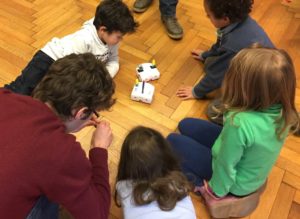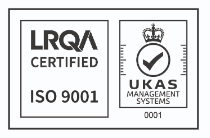3 reasons to introduce robotics in school
When we think about robots, some of us might envision a futuristic state full of beeping lights and flying machines. While the movie representation of robots living within our society is still far from reach, there has been an increase in the use of robotic technology within various sectors of our everyday lives. We see an increase especially within educational programmes, where educators employ robotics to help students learn in a more efficient manner.
1. A Greater Involvement in the Learning Process

Educational robotics can support the development of students’ skills by allowing them to feel more involved throughout their learning process. The ER4STEM (www.er4stem.eu ) project was a collaboration between six different partners in the EU, where robotics was used to stimulate students’ curiosity and interest within STEM sectors. EU Code Week Malta was an initiative supporting this project, and AcrossLimits put together a number of workshops using the robots Dash and Dot to facilitate children’s understanding of programming. By seeing robots react to the programming language, students were able to gain a greater understanding of command statements.
2. Inclusivity both within and outside of classrooms
With students that have different learning requirements, robots can be tailored to cater to their different needs. These can provide personalised educational programmes in a format that is easier and more efficient for the students to absorb, and offer constant companionship. Moreover, this technology can be employed to teach social skills and target attention disorders. MICHELANGELO (https://cordis.europa.eu/project/id/288241) was a project funded by the EU as a patient-centric model for remote management, treatment and rehabilitation of austistic children. Amongst its various outcomes, one of these included using a small humanoid robot Nao that performed actions that the children mimicked. There was also a camera-based system paired with a wearable EEG Solution, to identify the stimuli that may cause a reaction within an autistic child. This was done by taking snapshots of stimuli based on eye movements that were being tracked. It was proven that the children reacted better to the robot rather than to adult therapists.
3. We prepare students for the future

It is undeniable that technology and AI will play a big part in our future. By introducing robotics from an early stage within classrooms, this will prepare students to adapt to changes both within their personal and professional lives. Understanding technology better will ensure that its benefits are reaped, and that it is utilized to help, rather than disrupt, people in their everyday tasks. AcrossLimits recognizes this importance, and supports the implementation of technology within education, health, and other sectors that can bring about a change in people’s lives. If you are interested in acquiring further knowledge , contact us now on [email protected].



